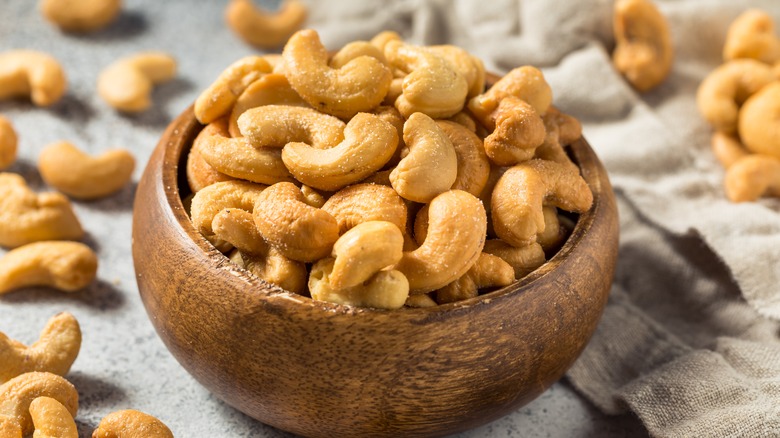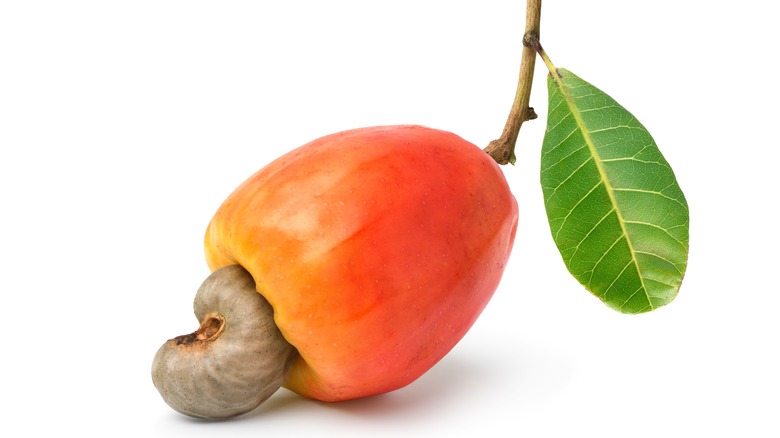Why Cashews Must Be Steamed Before They're Packaged
With their rich and creamy taste, it's hard to just eat one (or, let's face it, even a handful) of cashews. But you might not know that before you even open the can, they have been highly treated to ensure they are safe to eat.
The name cashew applies to the tree (which is part of the sumac family), the cashew apple (which is used to make everything from juice to jam), and the drupe (as cashews are not technically nuts, but seeds). The tree is native to tropical regions like Brazil and India, where the cashew is grown commercially. And besides being tasty as a dry, salty snack, which is how Western countries primarily eat cashews, in South America and Southeastern Asia, the seed is a significant part of the cuisine — think cashew chicken, curry with cashews, or Brazil's sweet cajuzinhos.
However, before cashews can be transformed into cashew-coconut rice or cashew butter ball cookies, they have to go through the multiple steps of harvesting, drying, roasting, and steaming just to be consumable.
Treated for your safety
Cashews require a lot of work to get from tree to table. After being handpicked, the cashew nuts are separated from the apples and sun-dried. Next, the dried fruits are roasted, causing the outer shells to be shed and a harmful resin to be eliminated. Then, the inner shells are manually extracted, followed by an additional heating of the kernels so the coating on the cashew seed is removed.
If all of this work is not done, cashews can make a person sick. The shells on the cashews, according to The Culture Trip contain anacardic acid, which can cause an upset stomach (and can even be deadly if consumed in large amounts), as well as severe skin irritation. A further production step of roasting or steaming is done to the cashews, which eliminates the chemical urushiol — the oil also found in poison ivy, which induces an allergenic response in most people.
If it's made it to the grocery store, you don't need to worry, as the nuts have already been treated to remove the shell and the concomitant urushiol. So labels like "raw" and "roasted" shouldn't send up any red flags, as they've already been heated twice before being sold — the first time to remove the shell and again to add color and flavor.
Now that you know all the steps it takes to make cashews edible, you'll probably never see this "nut" the same way again!

